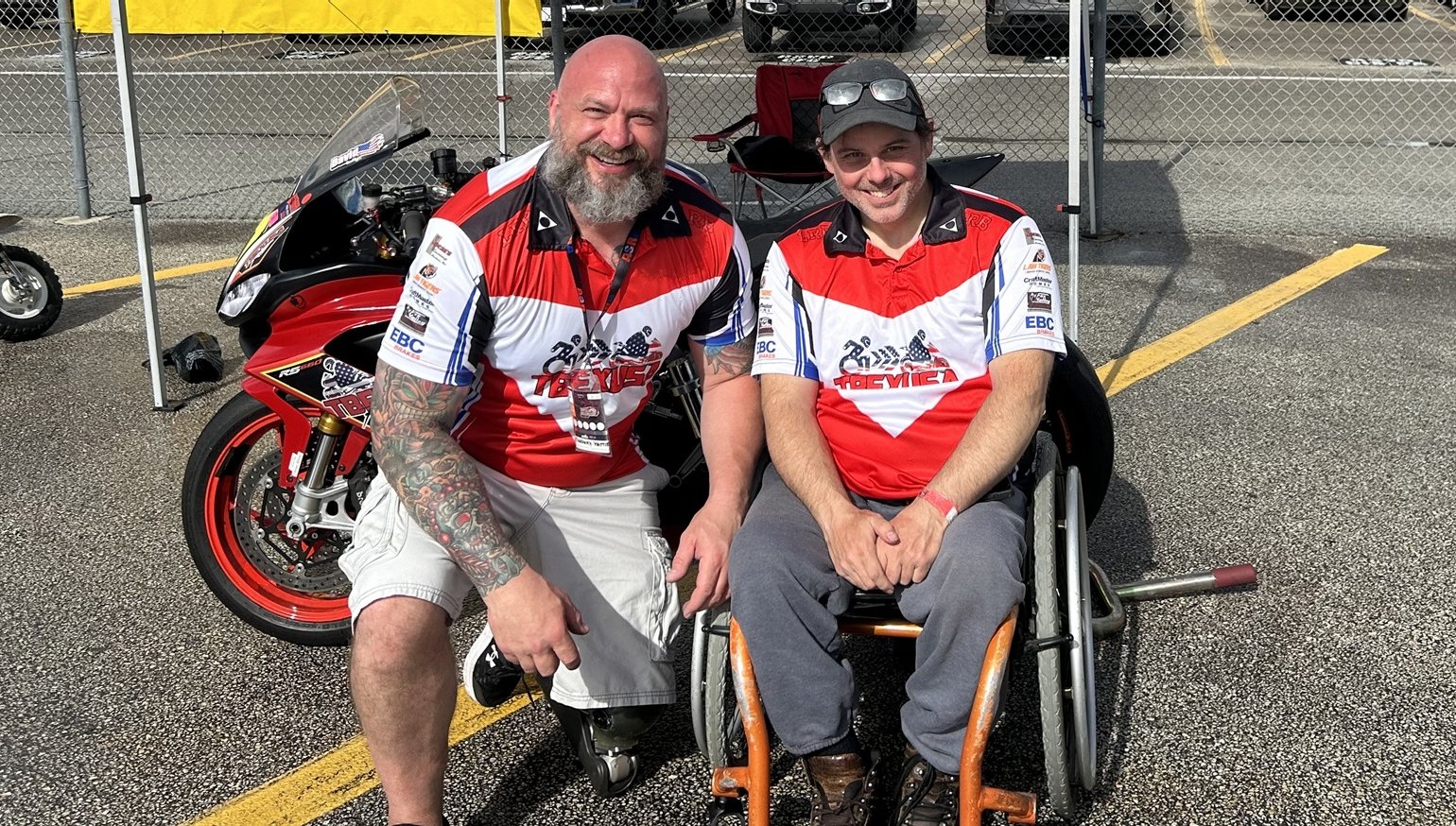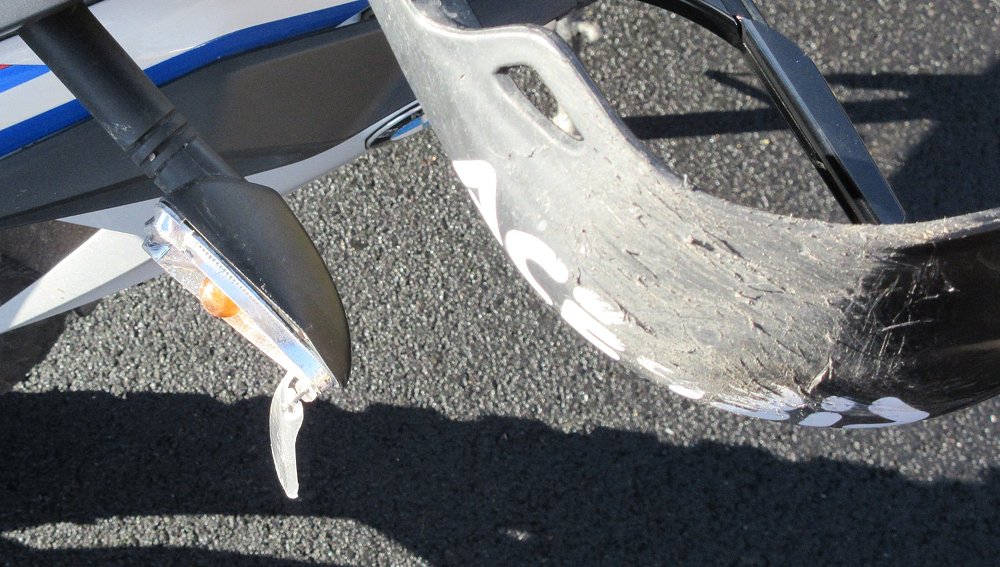"I remember when the car hit me, I saw the family in the back seat," recalls Joe Forde of his life-changing motorcycle accident in 2019.
He was riding home from a friend's wedding, with his wife following behind. "My wife saw the accident. She grabbed my leg off the highway. Three days later, I'm in the hospital and I don't have legs or feet, I can't move, and I have tubes in my throat."
Even though he survived, some of his dreams died that day. "I had set goals for myself as a young kid and I felt like I was accomplishing them. Then this happens."
After his injuries, he had a new dream — to get back on two wheels. It wasn't easy. Then he met Pinny Lunger, the founder of Street Riders LLC, who helped make it reality.
Street Riders took riders off the street and introduced them to the safer, more controlled environment of the race track. Lunger invited Forde to a track day. "He said if I knew any other people like me who wanted to get back into riding to bring them by the track," Forde says. From that meeting, the Ride Again Foundation was born.
Ride Again's goal is to help disabled riders — "survivors," as Forde calls them — get back on bikes. Ride Again events include a simulator bike that leans like a moving one, mechanics who modify and adapt bikes to accommodate amputees and paraplegics, and volunteers responsible for transporting survivors and helping out at the track.
She nearly died, but the desire to ride didn't
Shelly Graham is one such survivor. She was riding with a friend one night when she was T-boned by a car as she turned left near her home. She was thrown 60 feet and landed on the front lawn of a nursing home. She died once in the ambulance, and again on the operating table, and was in a coma for 30 days. When she came around, her right leg was gone.
"I was in ICU for a month until I started rehab, then began my journey as an above-the-knee amputee," Graham says. But the urge to ride was still there.
"About three months after my accident, someone sent me a video about an amputee who rides a motorcycle. I didn't even know that was a possibility. I told my family I'm gonna ride again. If you ride, you know it's in your blood." A year after her accident, she was at a Ride Again track day where she met other amputee riders.
"Meeting other people who faced the same daily challenges… I didn't know how I was going to do it. I rode cruisers, so I had no idea what sport bikes and track days were all about."
But she persevered. The staff put her on a Honda Grom, the easiest bike to deal with for a five-foot-tall woman. "Getting to go from a straightaway to a complete stop was a very emotional moment," Graham says. "It's very special to me that they could do all that work just so I could spend those few seconds taking off and coming to a complete stop."
Graham rides a Can-Am three-wheeler now. "But I'm determined to get back to riding on two wheels." To that end, she recently went back to the New York Safety Track and, with the help of the Ride Again Foundation, was able to turn laps.
"I feel very fortunate to be connected to the Ride Again Foundation, and the partners they have are incredible," she says.
Back after 26 years
The possibility of getting back on a motorcycle never occurred to Tony Berlandi until 26 years after the crash that left him a paraplegic.
"I had a bad wreck on the road, got tangled up in a guardrail, and broke my back," he says. His daughter found The Bike Experience USA — now partnered with Ride Again — on Facebook. He met Mike Petrosini of TBEXUSA and several paraplegic racers at a MotoAmerica race in New Jersey. "I was hooked."
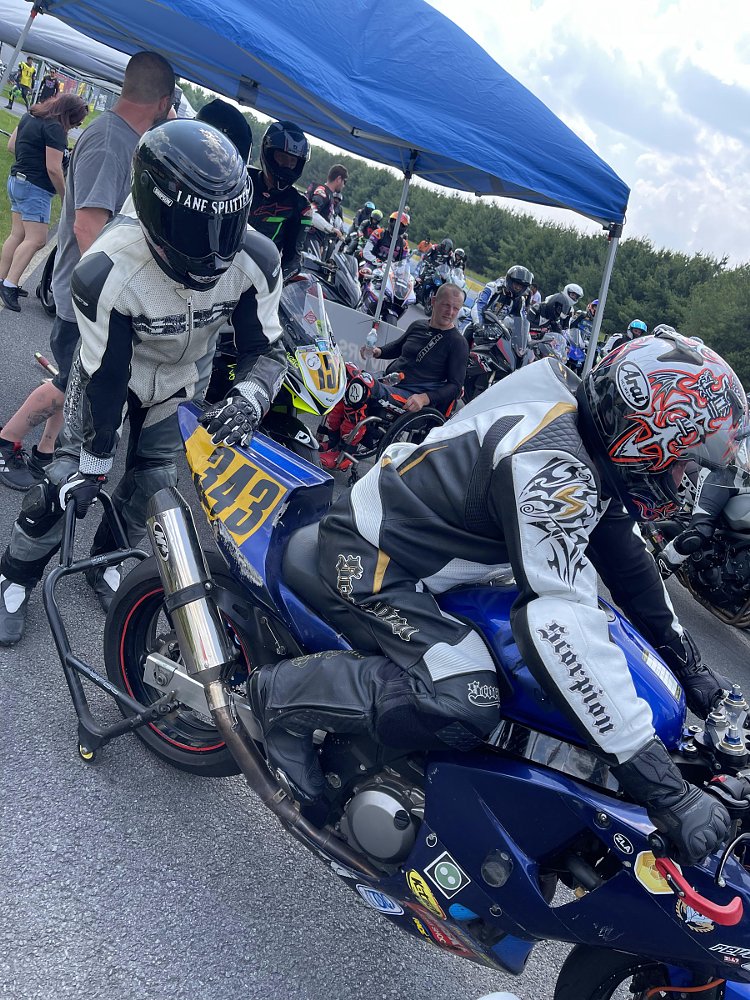
Berlandi bought a cheap Suzuki SV650 that had already been raced. He installed a thumb shifter, removed the rear brake, and added aluminum footpegs with magnets in them that lined up with magnets in the soles of his boots to keep his feet on the pegs. Berlandi has since done a couple of track days with Ride Again.
"I've seen a lot of things in my life and sometimes when it looks too good it's not true," he says. "At first I thought, 'This has to be a dream, this can't be happening.' But it's for real."
Berlandi's not interested in getting back on the street — "There's too much going on, I'd be worried about getting hit" — but his daughter has been doing track days for five or six years and they rode together at a Ride Again event last year. "I've never met such big-hearted people in my life," he says. "I feel like I found a new family."
Finding an inner peace by riding again
Chadwick Hattie had just returned to the office after a business trip and hopped on his Suzuki Hayabusa for the ride home. "I was distracted — I had teenagers at home and I didn't know if they had burned the house to the ground or eaten all the food in the fridge — and I went the way I went because there were a couple of corners before I was going to be stuck on the highway for the rest of the way home."
He never made it home that day. He lost it in a corner, slammed into a cement barrier, and crushed his left leg.
"My leg looked like hamburger," he recalls. "I was a volunteer firefighter and I had military experience so I knew I had to take care of this and not bleed to death." He used his belt as a torniquet until help arrived. After 20 days in the hospital and two amputations — first below the knee, then above — he was sent home to heal.
"I told my mom I'd never ride bikes again," he says, "and made some promises I later wished I hadn't made. Spring of next year, I started seeing bikes on the road and got that 'It's time to ride' feeling. It wouldn't go away." Then he found The Bike Experience USA and contacted Mike Petrosini.
"He said if I wanted to ride again to come up and check him out." But there was someone he had to level with first — his mom. "I really feel like I need to do this," he told her. "She said 'I'm not happy about it but you have to live your life'."
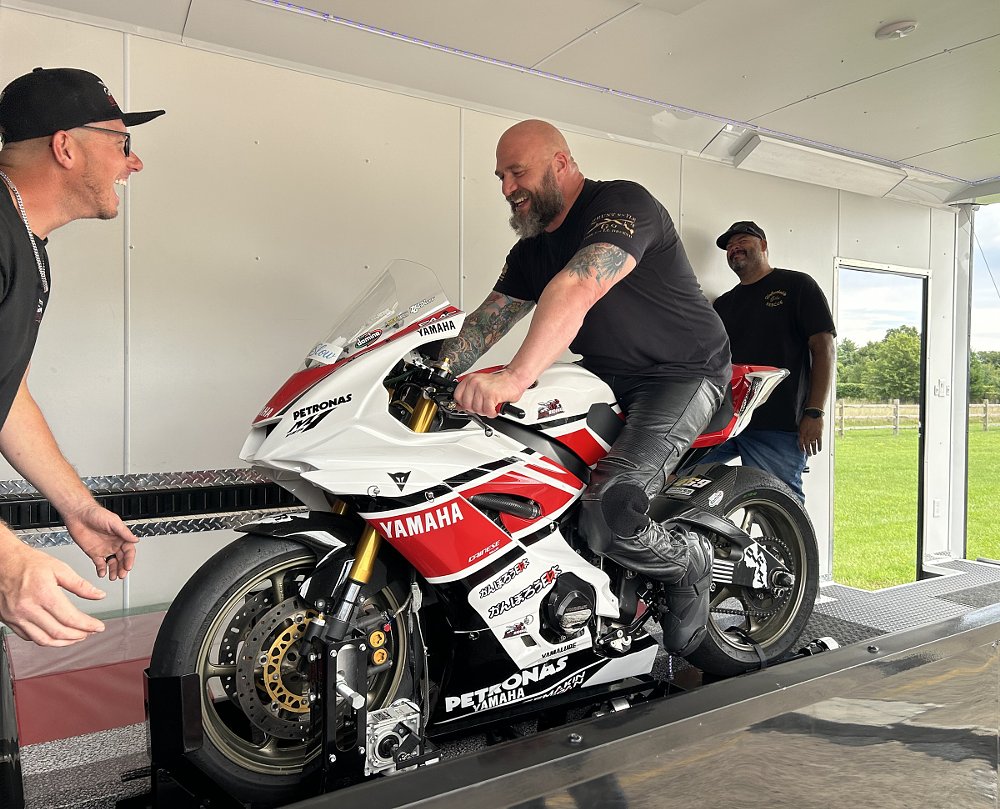
After gearing up, and a session on the simulator, it was time to hit the track. "Once I was sitting on a bike again I started to get the feeling of how much I missed this. When that bike came alive beneath me it was like someone had given me a peace I hadn't felt in a long time. As soon as I got going and went through a couple of turns, the anxiety went away. It was just me and the bike. My head cleared, all the questions and worries — just gone. I think I rode five or six hours that day.
"When I finally stopped and got off I had a huge wave of emotion. I had no idea how much I missed everything, the community, the machine, being in the helmet and on the road. That was two years, 11 months, and 14 days from my accident. It was an amazing experience. I'm forever grateful."
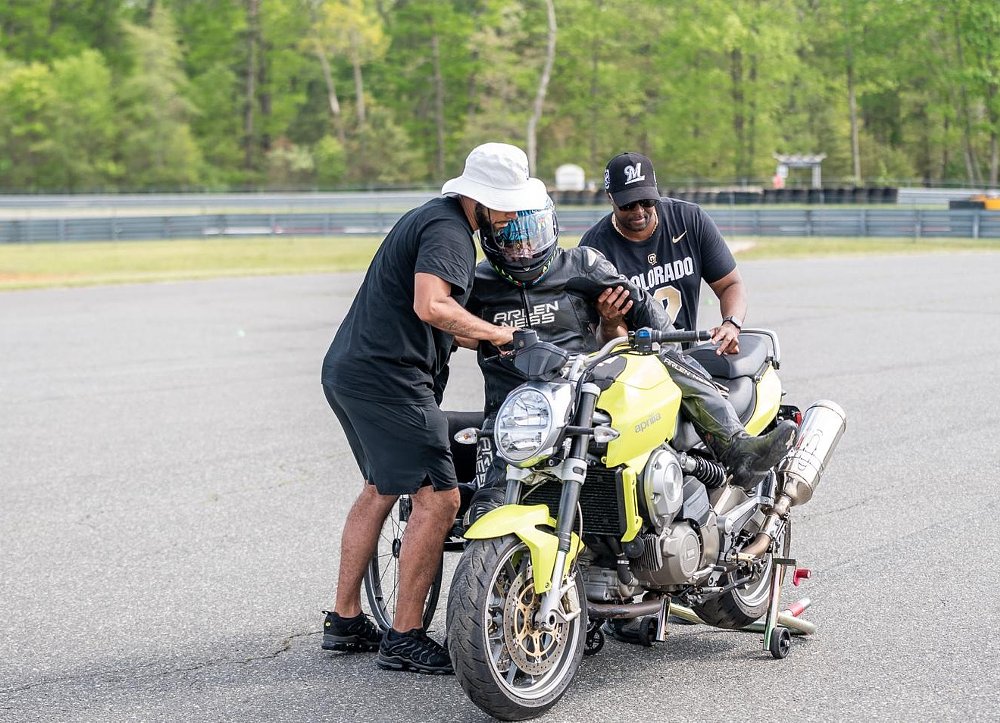
Ride Again co-founder Joe Forde remembers his journey back to riding as an arduous one.
"When I did it, I had to go through all the troubles. I crashed, I fell, I got hurt." Ride Again's goal is to make future survivors' returns as smooth as possible. "I want them to believe in themselves, and understand what their new bodies are going to feel like. Everyone in the Ride Again Foundation has one goal, one vision — to get back on the bike. We can see people with disabilities struggling. We all know falling is possible. But the reality is you can do it. You can find peace in riding."

 Membership
Membership

